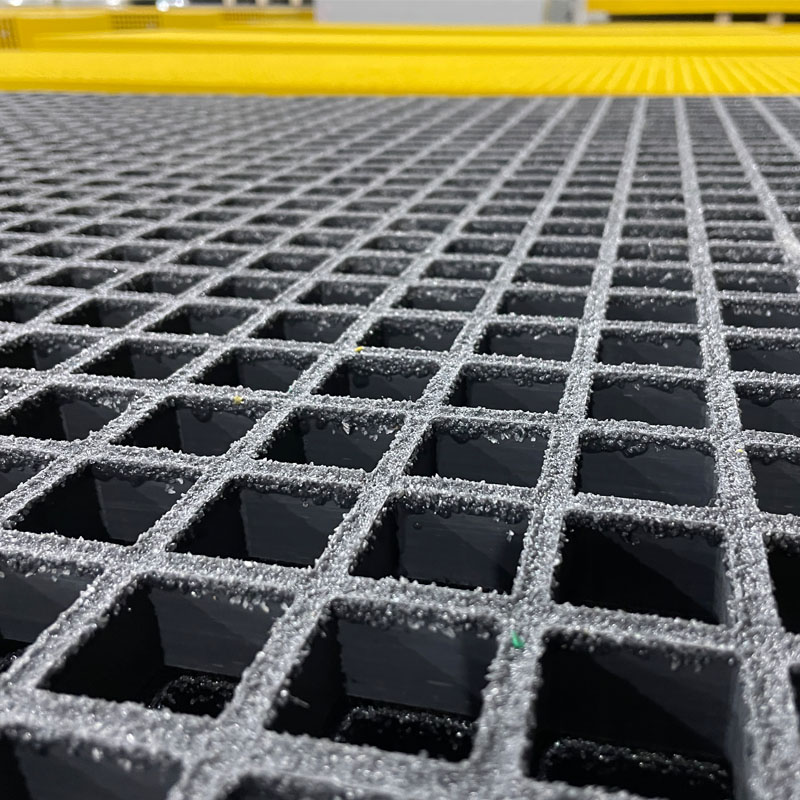loading...
- No. 9, Xingyuan South Street, Dongwaihuan Road, Zaoqiang County, Hengshui, Hebei, China
- admin@zjcomposites.com
- +86 15097380338
- Welcome to visit our website!
frp structural profiles
Understanding FRP Structural Profiles A Comprehensive Overview
Fiber Reinforced Polymer (FRP) structural profiles represent a significant advancement in engineering materials, delivering numerous advantages across various applications. FRP combines the best qualities of composite materials—specifically, the high strength-to-weight ratio, corrosion resistance, and durability—making it an attractive option for modern construction and infrastructure projects.
What Are FRP Structural Profiles?
FRP structural profiles are components made from polymer resins reinforced with fibers, typically glass, carbon, or aramid. These profiles can be manufactured in a range of shapes, including beams, columns, and plates, designed to meet the specific structural requirements of a project. The manufacturing process often involves techniques like pultrusion or filament winding, ensuring that the fiber orientation is optimized for strength and stiffness.
Key Advantages of FRP Profiles
1. High Strength-to-Weight Ratio One of the most significant benefits of using FRP profiles is their high strength-to-weight ratio. They provide the structural integrity needed for various applications while being lightweight, which can reduce the load on foundations and support systems.
2. Corrosion Resistance Unlike traditional materials such as steel and concrete, FRP is inherently resistant to corrosion, making it ideal for use in harsh environments (e.g., coastal regions, chemical plants). This resistance helps extend the lifespan of structures and reduces maintenance costs over time.
3. Design Flexibility FRP profiles can be easily molded into complex shapes and sizes, offering greater design flexibility. Engineers can create customized solutions that meet specific project needs more effectively than with conventional materials.
frp structural profiles

4. Electrical Insulation FRP is a non-conductive material, making it suitable for applications where electrical insulation is crucial. This characteristic can be particularly advantageous in industries where electrical hazards are a concern.
5. Sustainability As the construction industry moves towards more sustainable practices, FRP materials stand out due to their potential for recycling and lower environmental impact compared to traditional building materials.
Applications of FRP Structural Profiles
FRP structural profiles are utilized in a diverse range of applications. In the construction industry, they are commonly found in bridges, parking structures, and stadiums. Their ability to withstand fatigue and stress makes them ideal for demanding environments. In marine applications, boat building and dock construction benefit from FRP’s corrosion resistance. Additionally, FRP is gaining traction in the renewable energy sector, particularly in wind turbine blades and solar panel supports.
Challenges and Considerations
While FRP profiles offer numerous benefits, they are not without challenges. The initial cost of FRP materials can be higher than traditional materials like steel. Additionally, understanding the long-term performance under varying environmental conditions requires further research. Engineers need to consider factors such as the thermal expansion of FRP—this is crucial in ensuring that FRP components maintain their integrity in diverse climates.
Conclusion
FRP structural profiles embody the future of construction and engineering materials. As the demand for innovative, efficient, and sustainable solutions grows, FRP is poised to play an essential role in shaping infrastructure and industrial applications. By harnessing the unique properties of FRP composites, engineers and architects can create safer, more durable, and cost-effective structures that stand the test of time. As research and technology continue to evolve, we can expect to see even wider adoption of FRP structural profiles across various sectors, highlighting their importance in the modern engineering landscape.
-
The Rise of FRP Profiles: Strong, Lightweight, and Built to LastNewsJul.14,2025
-
SMC Panel Tanks: A Modern Water Storage Solution for All EnvironmentsNewsJul.14,2025
-
GRP Grating: A Modern Solution for Safe and Durable Access SystemsNewsJul.14,2025
-
Galvanized Steel Water Tanks: Durable, Reliable, and Ready for UseNewsJul.14,2025
-
FRP Mini Mesh Grating: The Safer, Smarter Flooring SolutionNewsJul.14,2025
-
Exploring FRP Vessels: Durable Solutions for Modern Fluid HandlingNewsJul.14,2025
-
GRP Structures: The Future of Lightweight, High-Performance EngineeringNewsJun.20,2025
